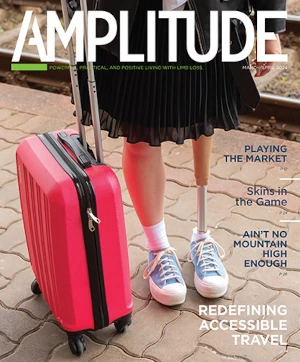
An intact, live acorn worm. The head is on the far left. Photograph by Shawn Luttrell, courtesy of the University of Washington.
Acorn worms can regrow every major body part-including the head, nervous system, and internal organs-from nothing after being sliced in half. If scientists can unlock the genetic network responsible for this feat, they might be able to regrow limbs in humans by manipulating the similar genetic heritage humans share with these invertebrates. The study, led by the University of Washington, was published in the December issue of the journal Developmental Dynamics.
“We share thousands of genes with these animals, and we have many, if not all, of the same genes they are using to regenerate their body structures,” said lead author Shawn Luttrell, a UW biology doctoral student based at Friday Harbor Laboratories, Friday Harbor, Washington. “This could have implications for central nervous system regeneration in humans if we can figure out the mechanism the worms use to regenerate.”
The new study finds that when an acorn worm is cut in half, it regrows head parts in perfect proportion to the existing bottom half and vice versa. After three or four days, the worms start growing a proboscis and mouth, and five to ten days after being cut the heart and kidneys reappear. By day 15, the worms had regrown a completely new neural tube, the researchers showed, which corresponds to the spinal cord and brain in humans.
After being cut, each half of the worm continues to thrive, and subsequent severings also produce vital, healthy worms once the body parts regrow, so that at the end of the process, a regenerated worm cannot be differentiated from one that has never been cut.
The researchers also analyzed the gene expression patterns of acorn worms as they regrew body parts, which is an important first step in understanding the mechanisms driving regeneration. They suspect that a “master control” gene or set of genes is responsible for activating a pattern of genetic activity that promotes regrowth, because once regeneration begins, the same pattern unfolds in every worm. It’s as if the cells are independently reading road signs that tell them how far the mouth should be from the gill slits, and in what proportion to other body parts and the original worm’s size. When these gene patterns are known, tissue from a person with an amputation could be collected and the genes in those cells activated to go down a regeneration pathway. Then, a tissue graft could be placed on the end of a severed limb and the arm or leg could regrow to the right size, explained senior author Billie Swalla, PhD, director of Friday Harbor Laboratories and a UW biology professor.
Regeneration is common in many animal lineages, though among the vertebrates (which includes humans) it is most robust in amphibians and fish. Humans can regrow parts of organs and skin cells to some degree, but have lost the ability to regenerate complete body parts. Scientists suspect several reasons for this: Our immune systems might inhibit regeneration by creating impenetrable scar tissue over wounds, or perhaps our relatively large size compared with other animals might make regeneration too energy intensive. Replacing a limb might not be cost effective, from an energy perspective, if we can adapt to using nine fingers or one arm.
The researchers are now trying to decipher which type of cells the worms are using to regenerate. They might be using stem cells to promote regrowth, or they could be reassigning cells to regrow tissue. Researchers also hope to activate genes to stimulate complete regeneration in animals that currently cannot regrow all tissues, such as zebrafish.
Editor’s note: This story was adapted from materials provided by the University of Washington.



